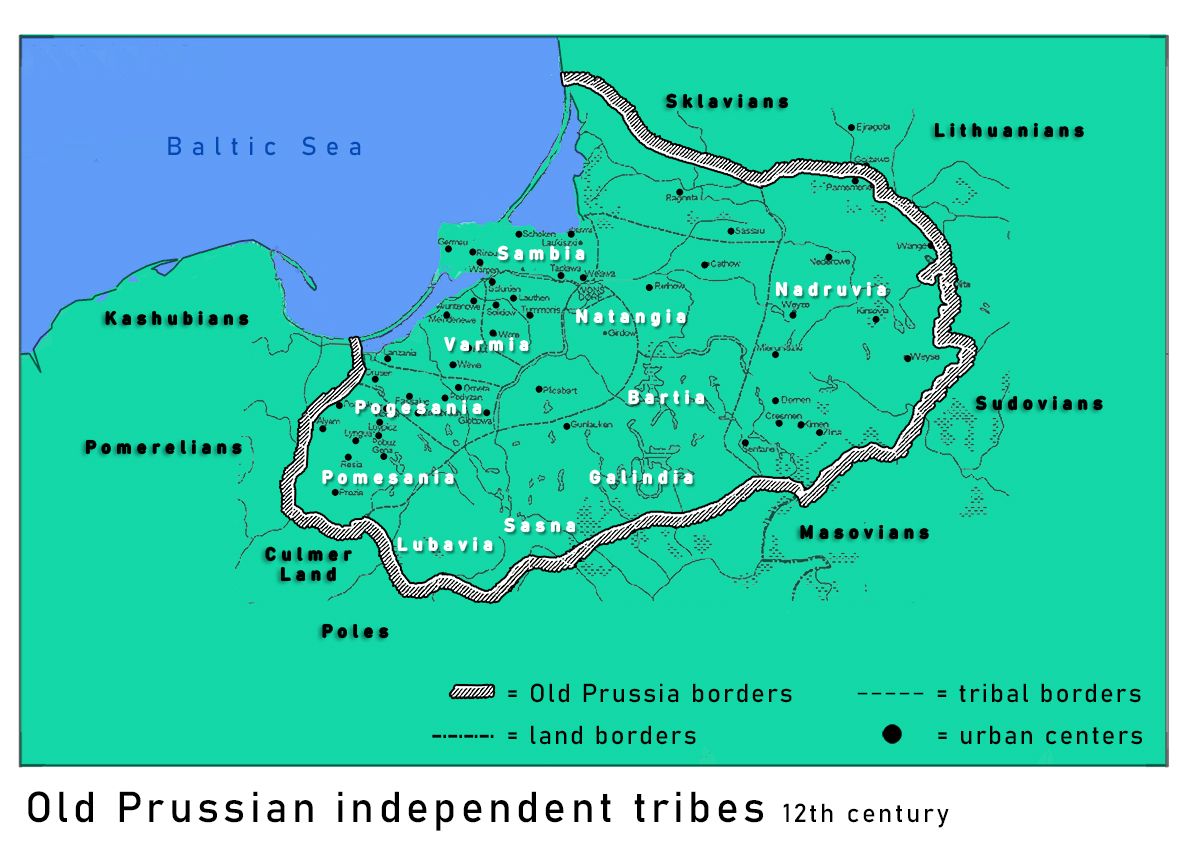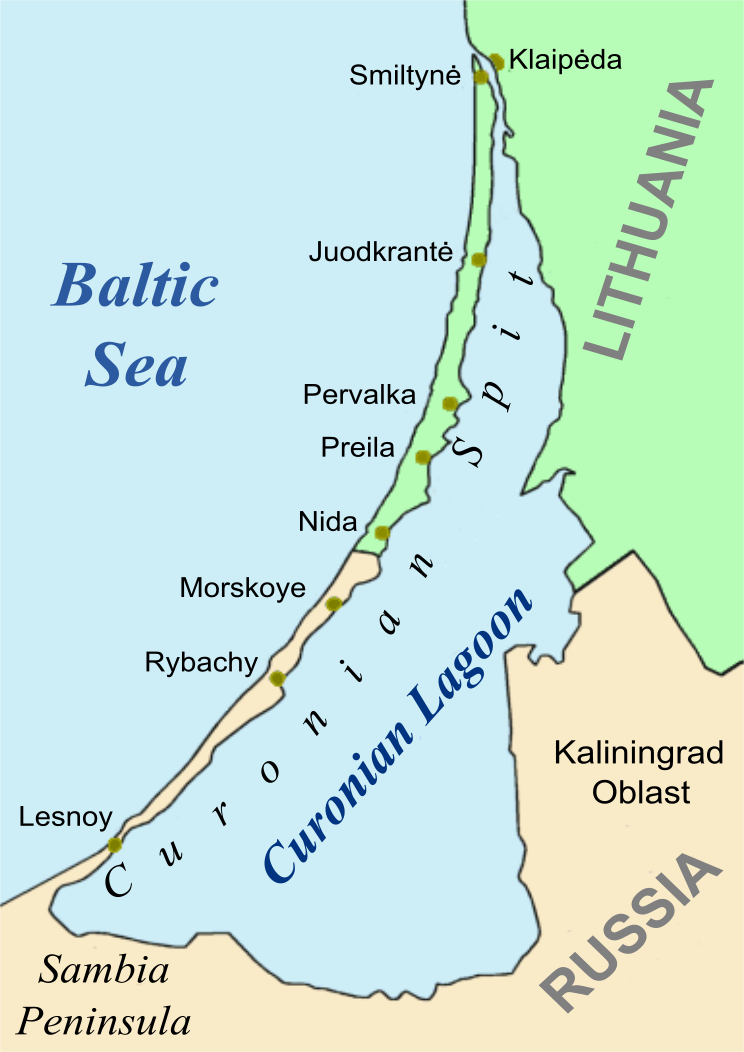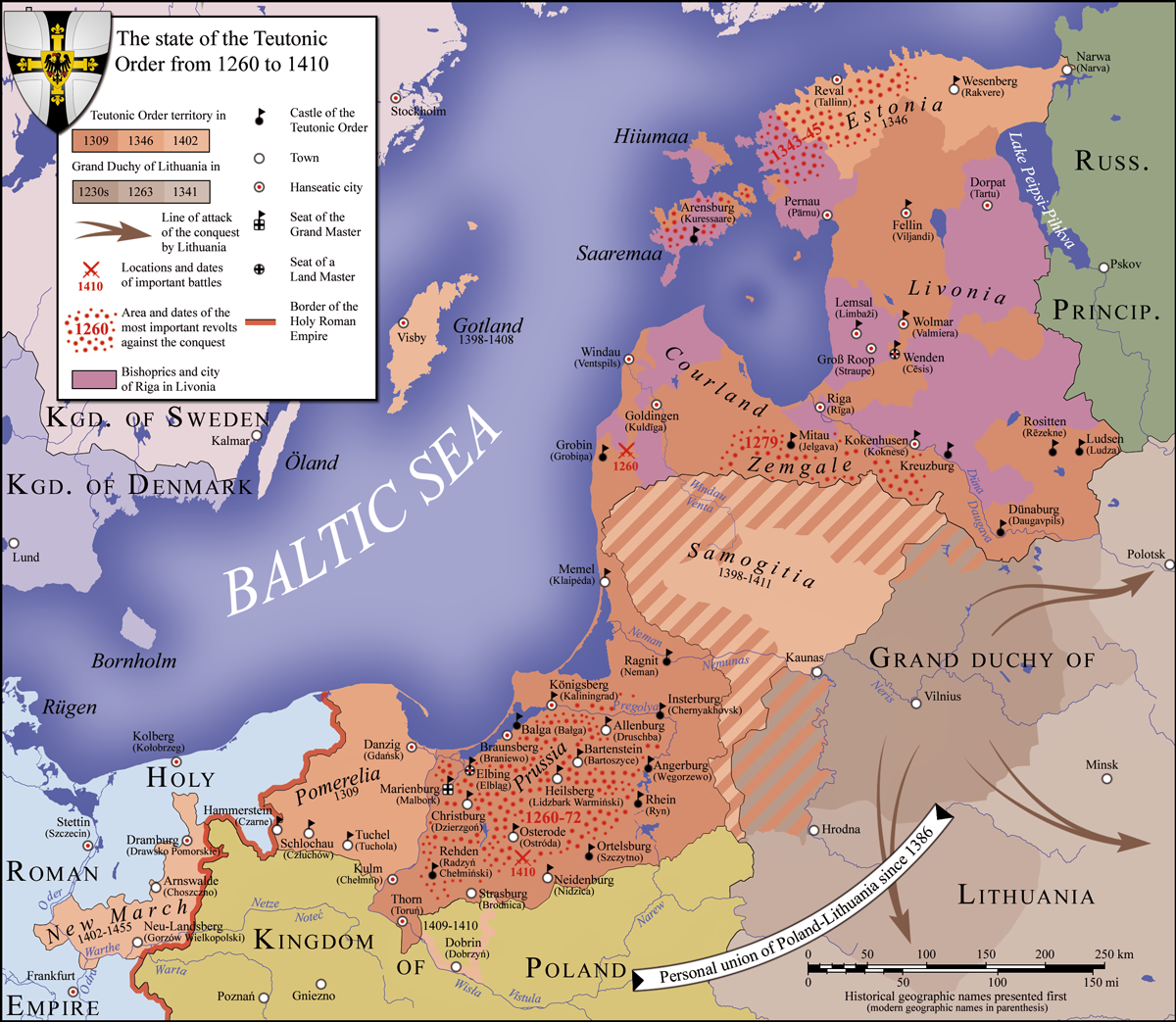|
Sambia
Sambia (russian: –°–į–ľ–Ī–ł–Ļ—Ā–ļ–ł–Ļ –Ņ–ĺ–Ľ—É–ĺ—Ā—ā—Ä–ĺ–≤, lit=Sambian Peninsula, translit=Sambiysky poluostrov) or Samland (russian: –ó–Ķ–ľ–Ľ–į–Ĺ–ī—Ā–ļ–ł–Ļ –Ņ–ĺ–Ľ—É–ĺ—Ā—ā—Ä–ĺ–≤, lit=Zemlandic Peninsula, translit=Zemlandsky poluostrov) or Kaliningrad Peninsula (official name, russian: –ö–į–Ľ–ł–Ĺ–ł–Ĺ–≥—Ä–į–ī—Ā–ļ–ł–Ļ –Ņ–ĺ–Ľ—É–ĺ—Ā—ā—Ä–ĺ–≤, ''Kaliningradsky poluostrov'') is a peninsula in the Kaliningrad Oblast of Russia, on the southeastern shore of the Baltic Sea. The peninsula is bounded by the Curonian Lagoon to the north-east, the Vistula Lagoon in the southwest, the Pregolya River in the south, and the Deyma River in the east. As Sambia is surrounded on all sides by water, it is technically an island. Historically it formed an important part of the historic region of Prussia. Names Sambia is named after the Sambians, an extinct tribe of Old Prussians. ''Samland'' is the name for peninsula in the Germanic languages. Polish and Latin speakers call the area ''Sambia'', while the ... [...More Info...] [...Related Items...] OR: [Wikipedia] [Google] [Baidu] |
Sambians
The Sambians were a Old Prussians, Prussian tribe. They inhabited the Sambia Peninsula north of the city of Königsberg (now Kaliningrad). Sambians were located in a coastal territory rich in amber and engaged in trade early on (see Amber Road). Therefore, they established contacts with foreign nations before any other Prussians. However, as all other Prussians, they were conquered by the Teutonic Knights, and, exposed to cultural assimilation, assimilation and Germanisation of Prussia, Germanization, became extinct sometime in the 17th century. The Sambians bordered the Natangians in the south, and the Nadruvians in the east. History Engaged in the amber trade, Sambia was the richest and most densely populated region of Prussia (region), Prussia. It provides a wealth of artifacts from the Bronze Age, including imported goods from the Roman Empire. Sambians, unlike other Prussians, did not cremate their dead. They built earth barrows above graves and surrounded them with stone ci ... [...More Info...] [...Related Items...] OR: [Wikipedia] [Google] [Baidu] |
Bishopric Of Samland
The Bishopric of Samland (Sambia) (german: Bistum Samland, pl, Diecezja sambijska) was a bishopric in Samland (Sambia) in medieval Prussia. It was founded as a Roman Catholic diocese in 1243 by papal legate William of Modena. Its seat was Königsberg, until 1523 the episcopal residence was in Fischhausen. The bishopric became Lutheran in the 16th century during the Protestant Reformation and was eventually dissolved following the establishment of Ducal Prussia, a Protestant vassal duchy of the Kingdom of Poland. The territory of the defunct bishopric of Samland came nominally under the jurisdiction of the Roman Catholic bishopric of Warmia in the 17th century, and the title of bishop of Samland was occasionally used by Warmian bishops. From 1617 to 1773, the Bishops of Warmia were the Catholic Apostolic administrators of Sambia. In 1821 Pope Pius VII formally dissolved the Diocese, and merged its territory with the Diocese of Warmia. Most of the area of the medieval bishopric ... [...More Info...] [...Related Items...] OR: [Wikipedia] [Google] [Baidu] |
Old Prussians
Old Prussians, Baltic Prussians or simply Prussians (Old Prussian: ''prŇęsai''; german: Pruzzen or ''Pru√üen''; la, Pruteni; lv, prŇęŇ°i; lt, prŇęsai; pl, Prusowie; csb, Pr√ęsowi√©) were an indigenous tribe among the Baltic peoples that inhabited the region of Prussia, at the south-eastern shore of the Baltic Sea between the Vistula Lagoon to the west and the Curonian Lagoon to the east. The Old Prussians, who spoke an Indo-European language now known as Old Prussian and worshipped pre-Christian deities, lent their name, despite very few commonalities, to the later, predominantly Low German-speaking inhabitants of the region. The duchy of the Polans under Mieszko I, which was the predecessor of the Kingdom of Poland, first attempted to conquer and baptize the Baltic tribes during the 10th century, but repeatedly encountered strong resistance. Not until the 13th century were the Old Prussians subjugated and their lands conquered by the Teutonic Order. The remaining Old Prus ... [...More Info...] [...Related Items...] OR: [Wikipedia] [Google] [Baidu] |
Old Prussian Language
Old Prussian was a Western Baltic language belonging to the Baltic branch of the Indo-European languages, which was once spoken by the Old Prussians, the Baltic peoples of the Prussian region. The language is called Old Prussian to avoid confusion with the German dialects of Low Prussian and High Prussian and with the adjective ''Prussian'' as it relates to the later German state. Old Prussian began to be written down in the Latin alphabet in about the 13th century, and a small amount of literature in the language survives. Classification and relation to other languages Old Prussian is an Indo-European language belonging to the Baltic branch. It is considered to be a Western Baltic language. Old Prussian was closely related to the other extinct Western Baltic languages, namely Sudovian, West Galindian and possibly Skalvian and Old Curonian. Other linguists consider Western Galindian and Skalvian to be Prussian dialects. It is related to the Eastern Baltic languages suc ... [...More Info...] [...Related Items...] OR: [Wikipedia] [Google] [Baidu] |
Teutonic Knights
The Order of Brothers of the German House of Saint Mary in Jerusalem, commonly known as the Teutonic Order, is a Catholic religious institution founded as a military society in Acre, Kingdom of Jerusalem. It was formed to aid Christians on their pilgrimages to the Holy Land and to establish hospitals. Its members have commonly been known as the Teutonic Knights, having a small voluntary and mercenary military membership, serving as a crusading military order for the protection of Christians in the Holy Land and the Baltics during the Middle Ages. Purely religious since 1810, the Teutonic Order still confers limited honorary knighthoods. The Bailiwick of Utrecht of the Teutonic Order, a Protestant chivalric order, is descended from the same medieval military order and also continues to award knighthoods and perform charitable work. Name The name of the Order of Brothers of the German House of Saint Mary in Jerusalem is in german: Orden der Br√ľder vom Deutschen Haus der He ... [...More Info...] [...Related Items...] OR: [Wikipedia] [Google] [Baidu] |
Duchy Of Prussia
The Duchy of Prussia (german: Herzogtum Preu√üen, pl, Ksińôstwo Pruskie, lt, PrŇęsijos kunigaikŇ°tystńó) or Ducal Prussia (german: Herzogliches Preu√üen, link=no; pl, Prusy KsińÖŇľńôce, link=no) was a duchy in the Prussia (region), region of Prussia established as a result of secularization of the Monastic Prussia, the territory that remained under the control of the State of the Teutonic Order until the Protestant Reformation in 1525. Overview The duchy became the first Protestant state when Albert, Duke of Prussia formally adopted Lutheranism in 1525. It was inhabited by a German, Polish (mainly in Masuria), and Lithuanian-speaking (mainly in Lithuania Minor) population. In 1525, during the Protestant Reformation, in accordance to the Treaty of Krak√≥w, the Grand Masters of the Teutonic Knights, Grand Master of the Teutonic Knights, Albert, secularization, secularized the order's prevailing Prussian territory (the Monastic Prussia), becoming Albert, Duke of Prussia. As the ... [...More Info...] [...Related Items...] OR: [Wikipedia] [Google] [Baidu] |
Pytheas
Pytheas of Massalia (; Ancient Greek: ő†ŌÖőłő≠őĪŌā ŠĹĀ őúőĪŌÉŌÉőĪőĽőĻŌéŌĄő∑Ōā ''Pyth√©as ho MassaliŇćtńďs''; Latin: ''Pytheas Massiliensis''; born 350 BC, 320‚Äď306 BC) was a Greeks, Greek List of Graeco-Roman geographers, geographer, explorer and astronomer from the Greek colonies, Greek colony of Massalia (modern-day Marseille, France). He made a voyage of exploration to northwestern Europe in about 325 BC, but his account of it, known widely in Ancient history, Antiquity, has not survived and is now known only through the writings of others. On this voyage, he circumnavigated and visited a considerable part of modern-day Great Britain and Ireland. He was the first known scientific visitor to see and describe the Arctic, polar ice, and the Celtic peoples, Celtic and Germanic peoples, Germanic tribes. He is also the first person on record to describe the midnight sun. The theoretical existence of some Northern phenomena that he described, such as a frigid zone, and temp ... [...More Info...] [...Related Items...] OR: [Wikipedia] [Google] [Baidu] |
Kaliningrad Oblast
Kaliningrad Oblast (russian: –ö–į–Ľ–ł–Ĺ–ł–Ĺ–≥—Ä–įŐĀ–ī—Ā–ļ–į—Ź –ĺŐĀ–Ī–Ľ–į—Ā—ā—Ć, translit=Kaliningradskaya oblast') is the westernmost federal subject of Russia. It is a semi-exclave situated on the Baltic Sea. The largest city and administrative centre of the province (oblast) is the city of Kaliningrad, formerly known as K√∂nigsberg. The port city of Baltiysk is Russia's only port on the Baltic Sea that remains ice-free in winter. Kaliningrad Oblast had a population of roughly 1 million in the Russian Census of 2010. The oblast is bordered by Poland to the south, Lithuania to the north and east and the Baltic Sea to the north-west. The territory was formerly the northern part of the Prussian province of East Prussia; the remaining southern part of the province is today part of the Warmian-Masurian Voivodeship in Poland. With the defeat of Nazi Germany in World War II, the territory was annexed to the Russian SFSR by the Soviet Union. Following the post-war migrat ... [...More Info...] [...Related Items...] OR: [Wikipedia] [Google] [Baidu] |
Prussia (region)
Prussia (Old Prussian: ''PrŇęsa''; german: Preu√üen; lt, PrŇęsija; pl, Prusy; russian: –ü—Ä—É—Ā—Ā–ł—Ź, tr=Prussiya, ''/Prussia/Borussia'') is a historical region in Europe on the south-eastern coast of the Baltic Sea, that ranges from the Vistula delta in the west to the end of the Curonian Spit in the east and extends inland as far as Masuria. Tacitus's ''Germania'' (98 AD) is the oldest known record of an eyewitness account on the territory and its inhabitants. Pliny the Elder had already confirmed that the Romans had navigated into the waters beyond the ''Cimbric peninsula'' (Jutland). Suiones, Sitones, Goths and other Germanic people had temporarily settled to the east and west of the Vistula River during the Migration Period, adjacent to the Aesti, who lived further to the east. Overview The region's inhabitants of the Middle Ages have first been called ''Bruzi'' in the brief text of the Bavarian Geographer and since been referred to as Old Prussians, who, beginning in ... [...More Info...] [...Related Items...] OR: [Wikipedia] [Google] [Baidu] |
Curonian Lagoon
The Curonian Lagoon (or Bay, Gulf; russian: –ö—É—Ä—ą—Ā–ļ–ł–Ļ –∑–į–Ľ–ł–≤, lt, KurŇ°iŇ≥ marios, pl, Zalew KuroŇĄski, german: Kurisches Haff, lv, KurŇ°u joma) is a freshwater lagoon separated from the Baltic Sea by the Curonian Spit. Its surface area is . The Neman River ( lt, Nemunas) supplies about 90% of its inflows; its watershed consists of about 100,450 square kilometres in Lithuania and Russia's Kaliningrad Oblast. Human history In the 13th century, the area around the lagoon was part of the ancestral lands of the Curonians and Old Prussians. Later it bordered the historical region of Lithuania Minor. At the northern end of the Spit, the Klaipńóda Strait connects the lagoon to the Baltic Sea, and the place was chosen by the Teutonic Knights in 1252 to found ''Memelburg'' castle and the city of Memel ‚ÄĒ officially called Klaipńóda in 1923‚Äď39, when the Memel Territory was separated from Germany, and again after 1945, when it became part of the Lithuanian SSR. As the ... [...More Info...] [...Related Items...] OR: [Wikipedia] [Google] [Baidu] |
Baltic Sea
The Baltic Sea is an arm of the Atlantic Ocean that is enclosed by Denmark, Estonia, Finland, Germany, Latvia, Lithuania, Poland, Russia, Sweden and the North and Central European Plain. The sea stretches from 53¬įN to 66¬įN latitude and from 10¬įE to 30¬įE longitude. A marginal sea of the Atlantic, with limited water exchange between the two water bodies, the Baltic Sea drains through the Danish Straits into the Kattegat by way of the √ėresund, Great Belt and Little Belt. It includes the Gulf of Bothnia, the Bay of Bothnia, the Gulf of Finland, the Gulf of Riga and the Bay of GdaŇĄsk. The " Baltic Proper" is bordered on its northern edge, at latitude 60¬įN, by √Öland and the Gulf of Bothnia, on its northeastern edge by the Gulf of Finland, on its eastern edge by the Gulf of Riga, and in the west by the Swedish part of the southern Scandinavian Peninsula. The Baltic Sea is connected by artificial waterways to the White Sea via the White Sea‚ÄďBaltic Canal and to the German ... [...More Info...] [...Related Items...] OR: [Wikipedia] [Google] [Baidu] |
Thirteen Years' War (1454‚Äď1466)
The Thirteen Years' War (german: Dreizehnj√§hriger Krieg; pl, wojna trzynastoletnia), also called the War of the Cities, was a conflict fought in 1454‚Äď1466 between the Prussian Confederation, allied with the Crown of the Kingdom of Poland, and the State of the Teutonic Order. The war began as an uprising by Prussian cities and local nobility to win independence from the Teutonic Knights. In 1454 Casimir IV married Elisabeth of Habsburg and the Prussian Confederation asked Poland's King Casimir IV Jagiellon for help and offered to accept the king as protector instead of the Teutonic Order. When the King assented, war broke out between supporters of the Prussian Confederation, backed by Poland, and backers of government by the Teutonic Knights. The Thirteen Years' War ended in the victory of the Prussian Confederation and Poland and in the Second Peace of Thorn (1466). This was soon followed by the War of the Priests (1467‚Äď1479), a drawn-out dispute over the independence o ... [...More Info...] [...Related Items...] OR: [Wikipedia] [Google] [Baidu] |







